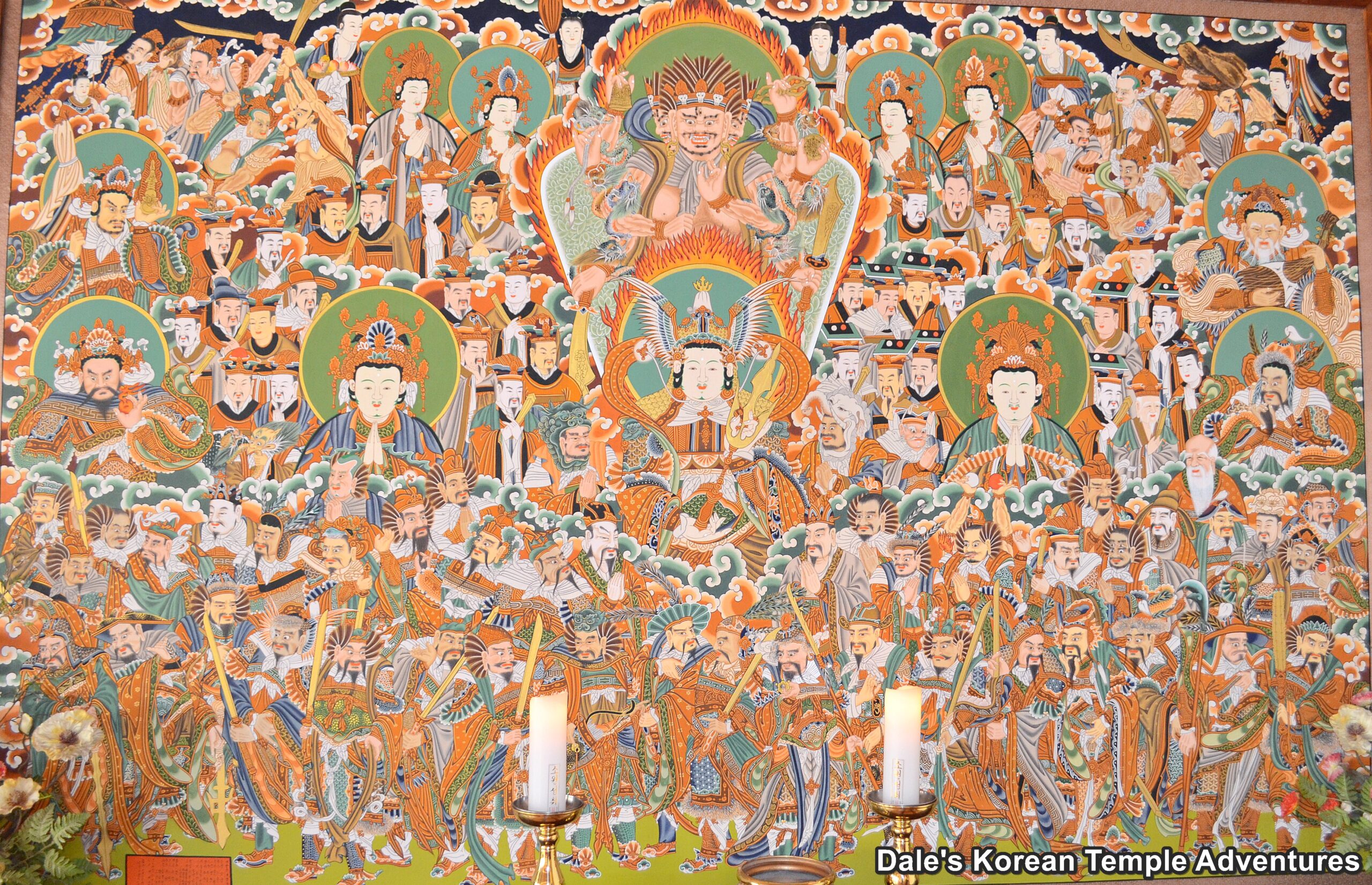
Introduction
The Shinjung Taenghwa is one of the most popular murals that you’ll find at a Korean Buddhist temple. In English, the Shinjung Taenghwa means “Altar Painting of Guardian Deities,” or the “Guardian Mural” for short. This mural is highly intricate. So what exactly does a Shinjung Taenghwa look like? Where can you find it? And what does it all mean?
Shinjung Taenghwa Design
The Shinjung Taenghwa is a relatively large sized mural. It can either be a mural or a wood relief. The Shinjung Taenghwa is typically found inside a temple’s main hall; however, this doesn’t preclude them from being found inside other temple shrine halls. The Shinjung Taenghwa is traditionally placed above an altar. The Shinjung Taenghwa can feature anywhere from five to one hundred and eight individual figures in the mural. All of the individual figures present in the Shinjung Taenghwa are typically shamanic in origin.
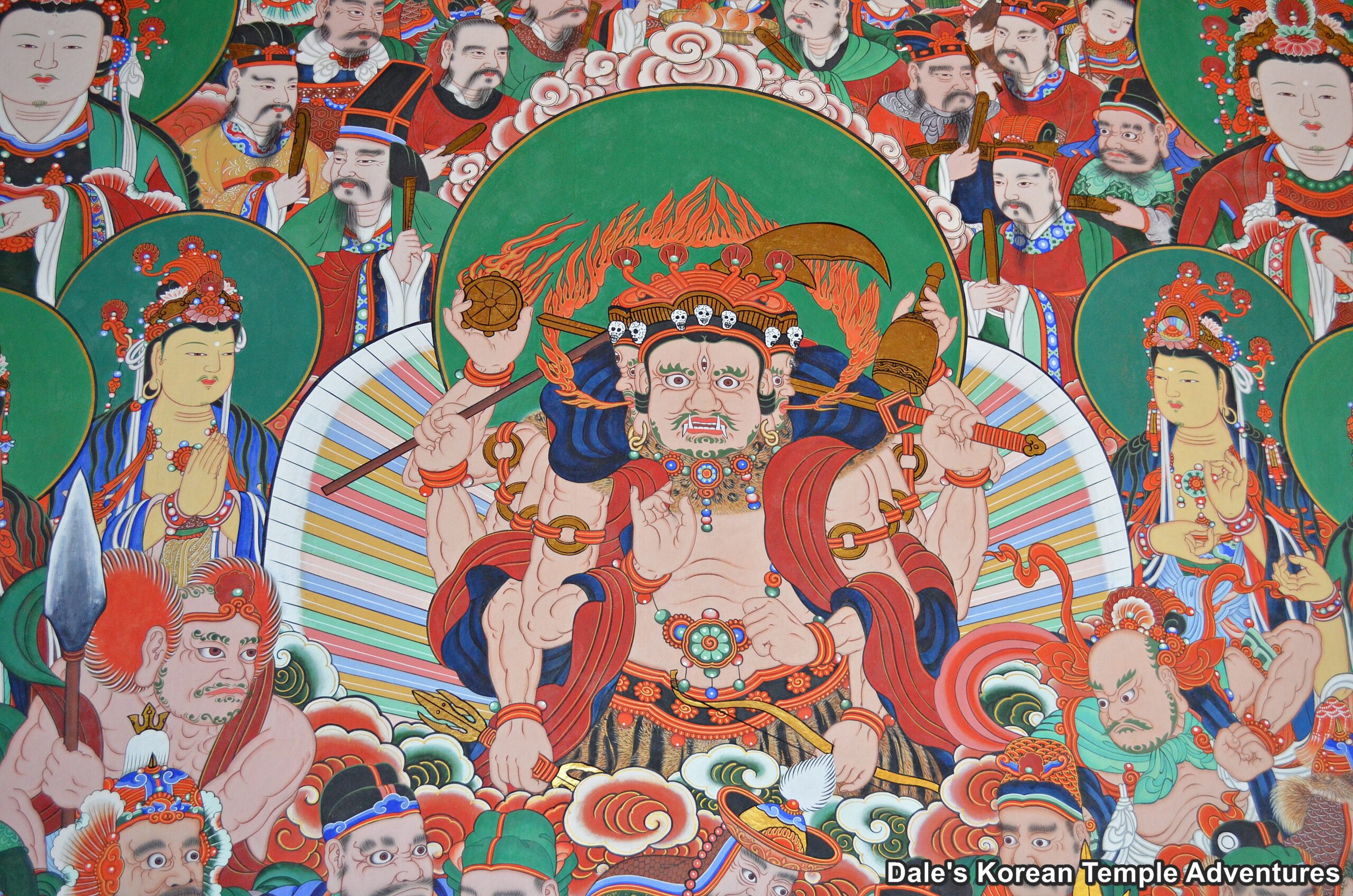
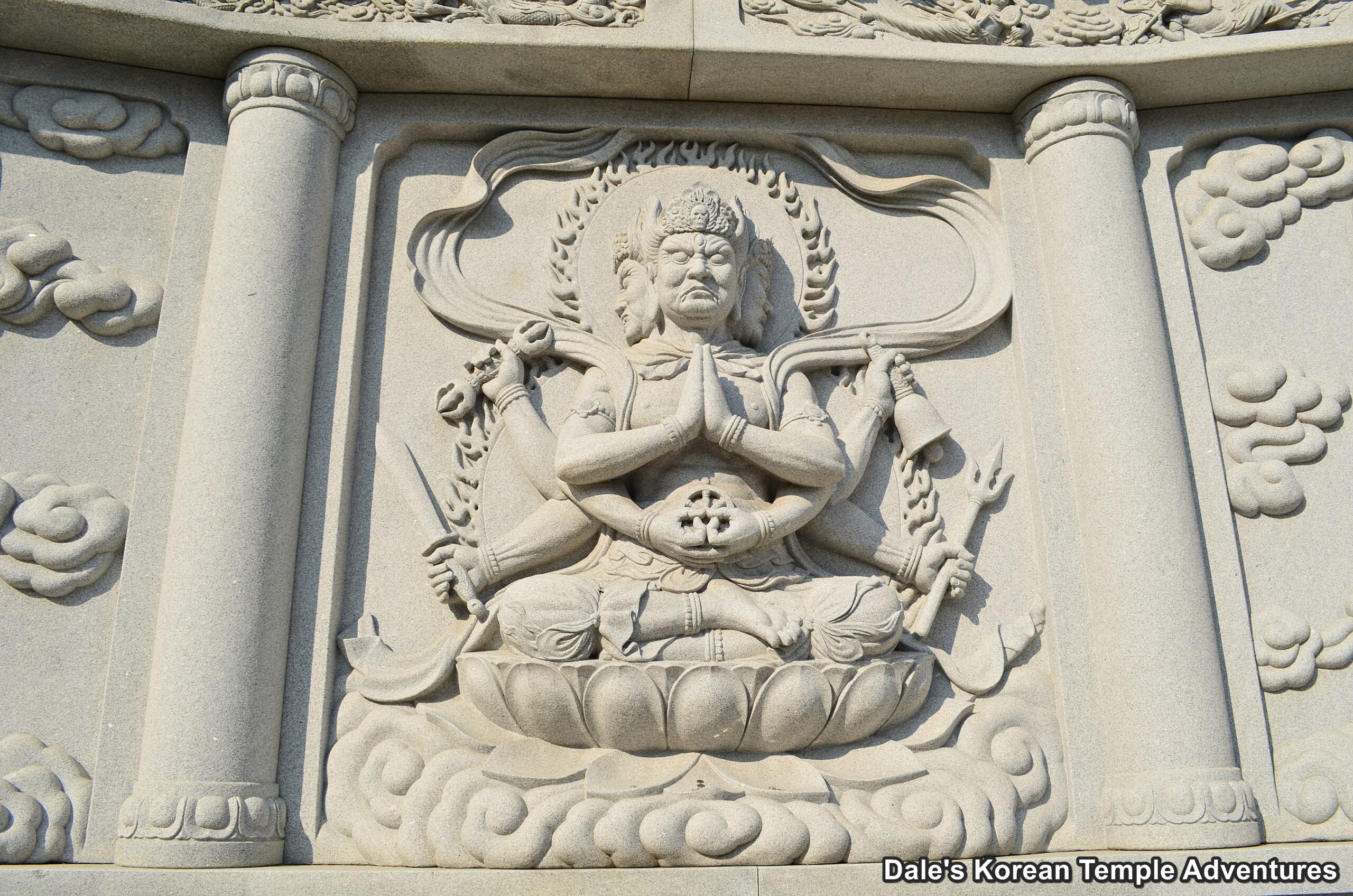
So what figures can you specifically find in a Shinjung Taenghwa. The most dominant figure in the mural is the centrally located, and multi-armed, Daeyejeok Geumgang (대예적금강), who is a protective demon that comes from Esoteric Buddhism.
Daeyejeok Geumgang stands above a figure with a winged helmet. This figure is Dongjin-bosal (The Bodhisattva that Protects the Buddha’s Teachings). Dongjin-bosal is believed to be the son of Shiva in Hinduism. Buddhist legend states that after the Buddha’s death a demon stole one of the Buddha’s teeth. Dongjin-bosal chased down this demon and retrieved the Buddha’s tooth. For this, Dongjin-bosal was rewarded. His reward was to protect both the Buddhist community (sangha in Sanskrit, or seungga in Korean), as well as the Buddha’s teachings (dharma in Sanskrit). With the growth of Seon Buddhism (Chan in China, or Zen in Japan) throughout Northeast Asia, Dongjin-bosal was promoted to a fully-fledged Bodhisattva. The wings on Dongjin-bosal’s helmet, which make it easier to identify this Bodhisattva, are believed to have been influenced by Siberian shamanism. The wings of Dongjin-bosal’s helmet symbolize his ability to fly up into the heavens and down into the deepest depths of hell. In addition to his winged helmet, Dongjin-bosal also wears a Chinese Tang Dynasty general’s uniform, while also holding a multi-blade vajra sword.
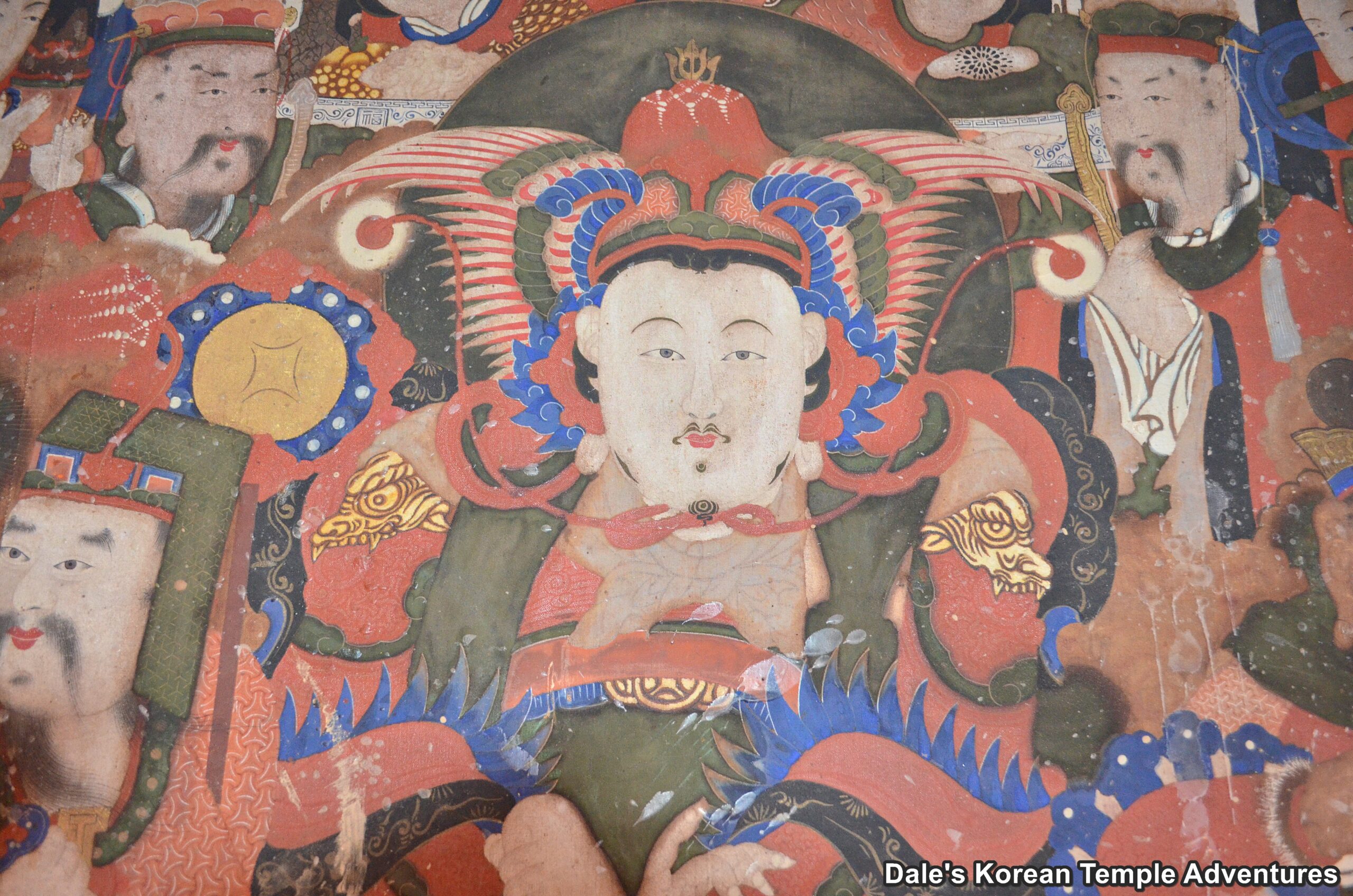
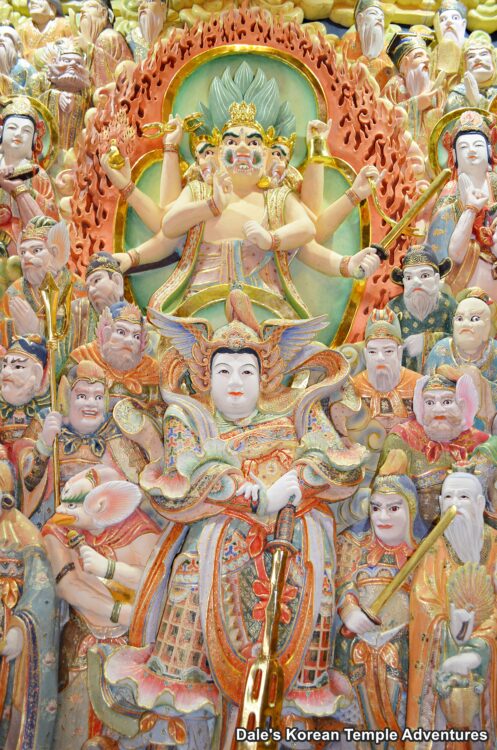
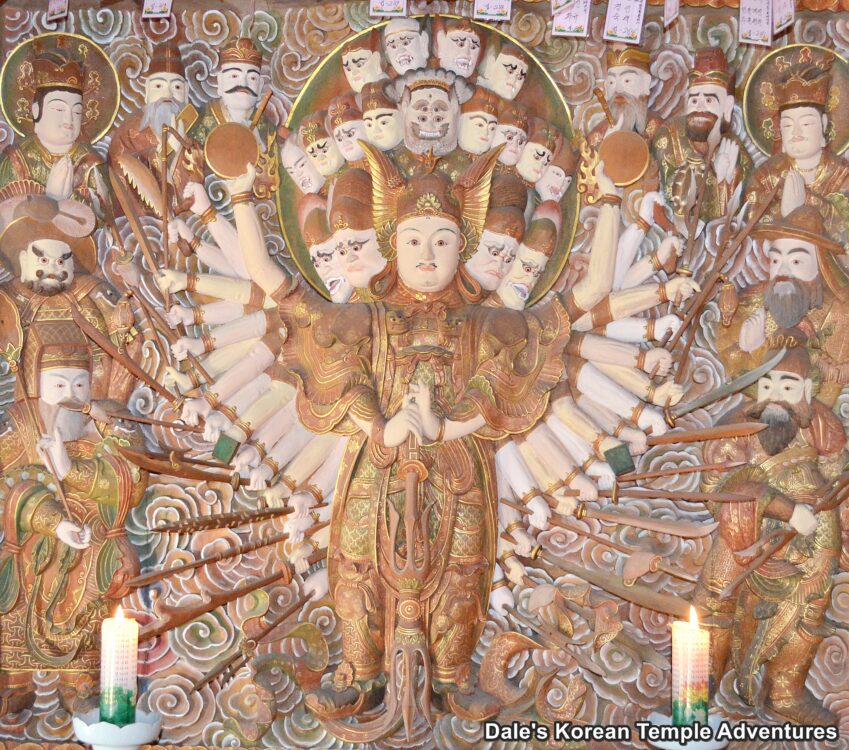
Flanking the two central images of Daeyejeok Geumgang and Dongjin-bosal are a pair of beautiful figures wearing a red and white crown. The figure with the crown with a white orb in it is Wolgwang-bosal (The Moonlight Bodhisattva). And the figure with the crown with a red orb in it is Ilgwang-bosal (The Sunlight Bodhisattva).
Joining these four central images are an assortment of various guardian deities. They include shaman deities and historical figures that can be Taoist, Confucian, and/or Hindu in origin. All these guardian deities are believed to have volunteered to protect the Buddha’s teachings (dharma), the temple or hermitage, and the Buddhist community (sangha) with whatever spiritual force they can employ. These deities often include the most popular shaman deities that are commonly found in Korean Buddhism like Sanshin (The Mountain Spirit) and Yongwang (The Dragon King). Additionally, heavenly spirits, earth spirits, and dongja (attendants) can also be found in the Shinjung Taenghwa. At the bottom of the Shinjung Taenghwa, you’ll find a row of military figures holding weapons.
All of the guardian deities found in the Shinjung Taenghwa are believed to reside in a realm of pleasure, but they can’t attain enlightenment. Often you’ll see monks or nuns chanting the Heart Sutra, or “Banyashim-gyeong” in Korean, in front of the Shinjung Taenhwa to help those deities found in the mural gain a human form so that they can potentially attain enlightenment in their next lives.
Conclusion
So the next time you’re at a temple and you see the Shinjung Taenghwa, which you probably will, give a respectful bow to those guardian deities that protect both the Buddha’s teachings and the Buddhist community.
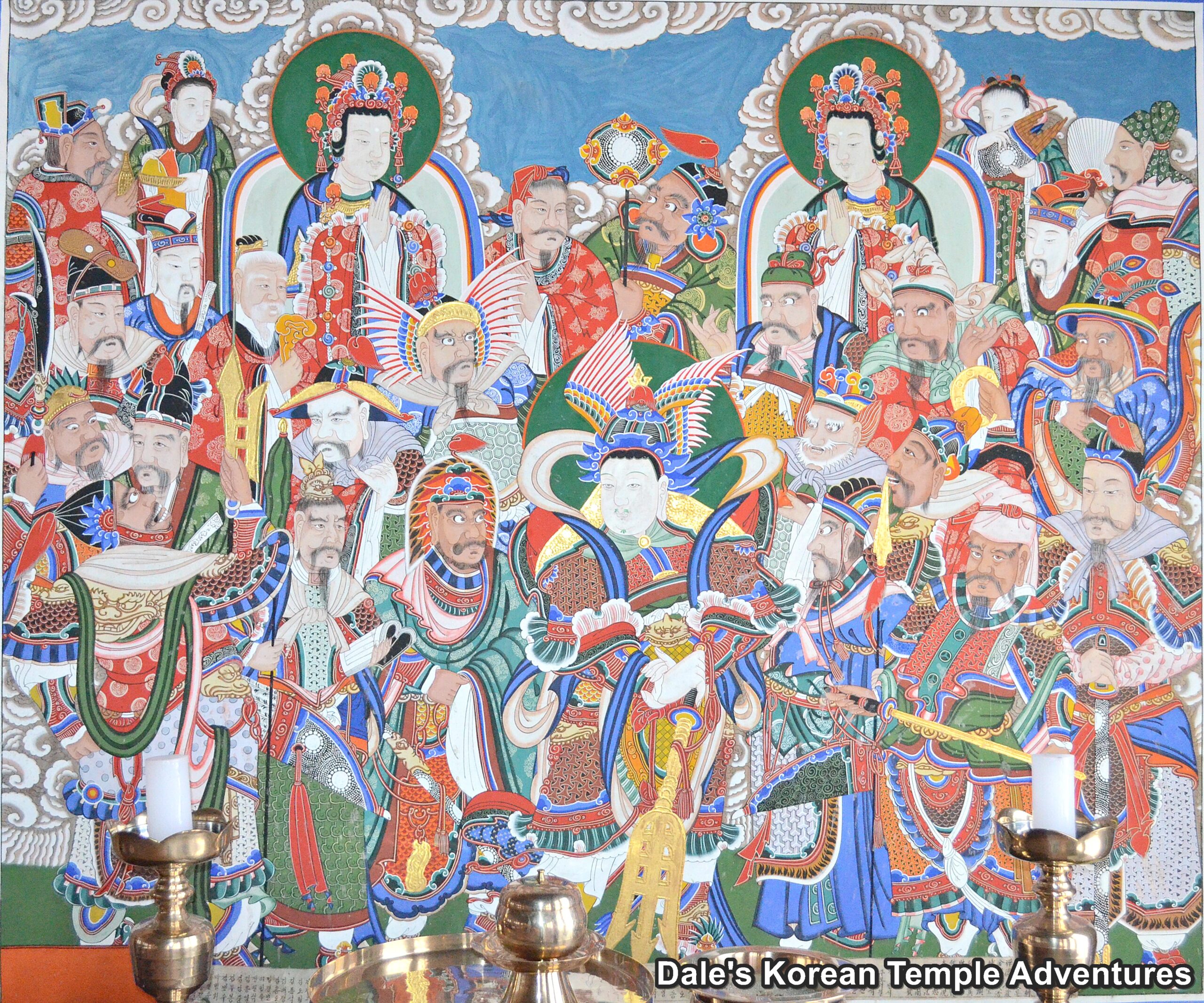
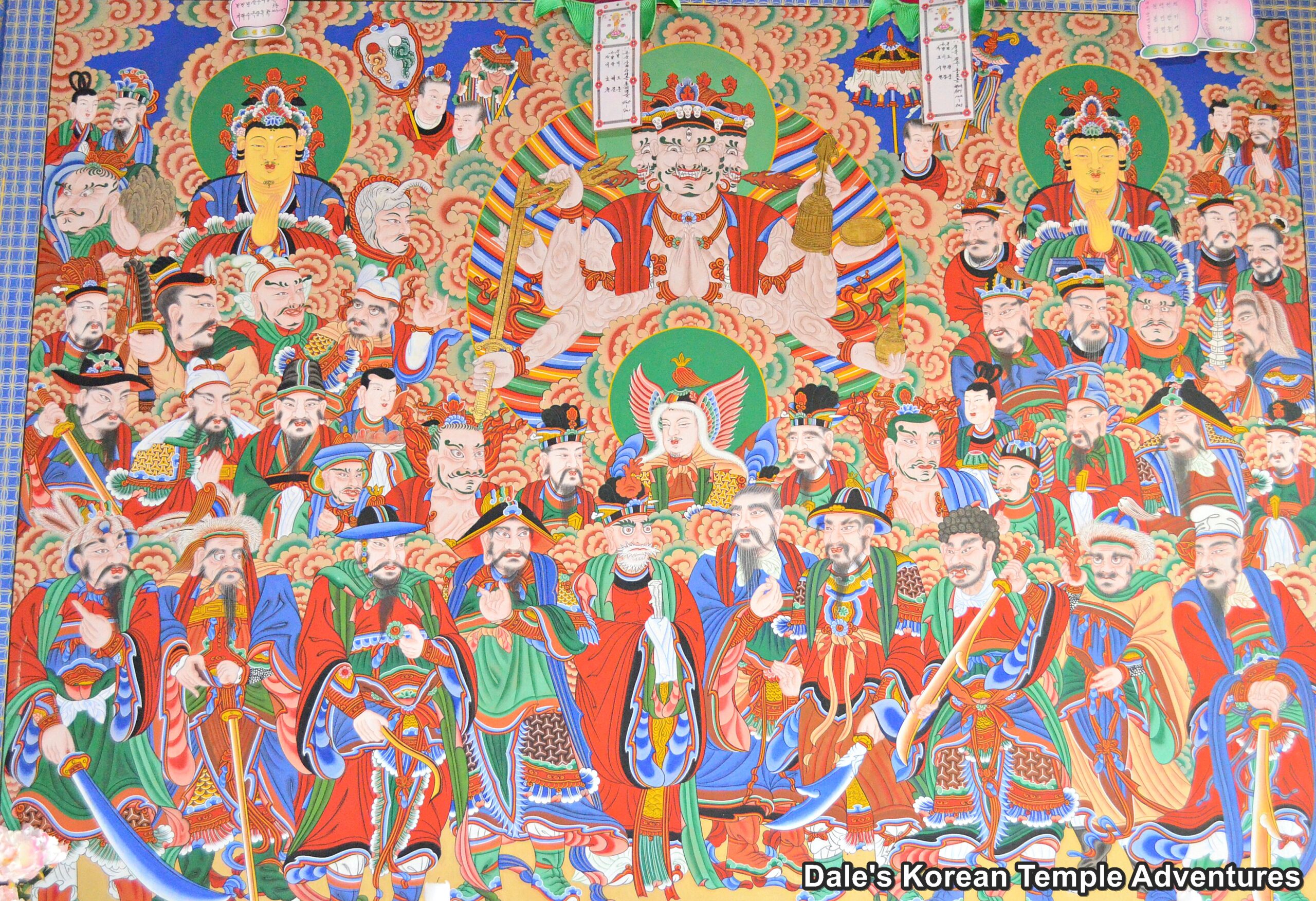


Recent comments